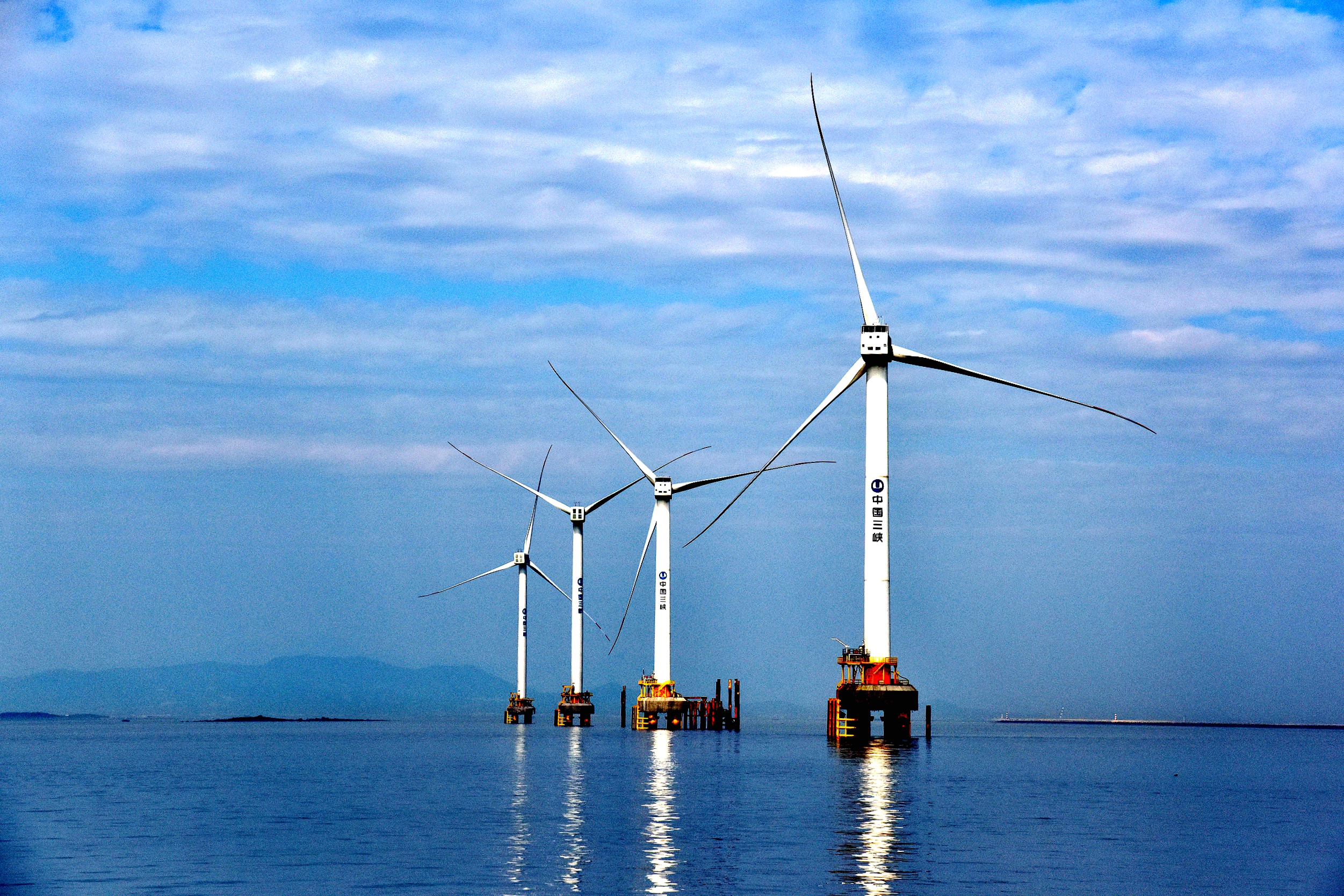Marching toward the sea: Exploration of offshore wind power
- By Guo Yiming
 0 Comment(s)
0 Comment(s) Print
Print E-mail China.org.cn, March 5, 2019
E-mail China.org.cn, March 5, 2019
When the Spanish grandee Don Quixote, in Miguel de Cervantes's book of the same name, attacked the windmills, he had no idea it was a pointless endeavor. However as "windmills," or wind turbines, are now being deployed offshore, it is obvious they can make a difference.

Currently, most of the world's wind power facilities are onshore. However, Lu Chun, a veteran in the clean energy sector, believes that, for a greener and more sustainable future, humanity should turn to the vast ocean.
Lu is the former head of the world's biggest hydropower builder - China Three Gorges Corp (CTG), as well as a member of the Standing Committee of the Chinese People's Political Consultative Conference (CPPCC) National Committee, the country's top political advisory body.
During an interview in the lead-up to the annual sessions of the national legislature and political advisory bodies, opening March 3, he told China.org.cn that offshore wind power had great potential to become a key component in the overall energy mix.
Offshore wind energy is the use of wind farms planted in coastal seas to harvest winds and generate electricity, which has various advantages compared to its onshore counterpart.

The wind is much stronger off the coasts and the speed is greater, Lu explained. Moreover, locating wind turbines offshore will not occupy any land and they can be sited adjacent to load centers along the coasts, such as large cities, eliminating the need for long-distance transmissions.
Promising future
China has a long coastline of over 18,000 kilometers and is home to over 6,000 islands, providing abundant wind resources. According to recent studies conducted by China's meteorological authorities, the potential volume of wind energy that can be harnessed at an ocean depth of five to 25 meters is over 200 million kilowatts, which is equivalent to the installed capacity of nearly 10 Three Gorges hydropower stations, the existing facility being the world's largest.
According to Lu, large-scale exploration of offshore wind power will not only provide stable, affordable and clean energy to coastal cities, which are mostly developed regions with high electricity consumption, but can also inject fresh momentum in building advanced manufacturing clusters and upgrade the industrial chain as China advances its ocean economy.
Britain is now the leader in offshore wind installations, followed by Germany and China. However, analysts of FTI Consulting expect China's cumulative offshore capacity to pull ahead of the U.K. after 2021 to reach almost 10.9 gigawatts.
According to a forecast from Fitch Solutions released last November, China will also become the largest market in the world for wind generally. The country will account for more than 45 percent of the 465 gigawatts of capacity additions Fitch is forecasting for the wind sector between the end of 2017 and 2027.
"We note that China has a national growth target of five gigawatts by 2020, but the cumulative 2020 provincial-level targets in Jiangsu (3,500 megawatts), Fujian (2,000 megawatts) and Guangdong (2,000 megawatts) already exceed the national target."
The way forward
Despite rapid development and huge potential, China's offshore wind power capacity at present suffers from a series of problems including lack of scale, the lack of innovation and key technologies, incomplete industrial chains, as well as insufficient laws and regulation governing the sector, said Lu.
He suggested that official support to develop large-scale offshore wind power facilities should be elevated to the national strategic level and the government should offer additional aid to ensure its long-term and sustained development.
Moreover, companies should also team up to solve difficulties in facilities deployment and building, and to master core technologies through independent development.
According to Xi Jinping's report at the 19th CPC National Congress, China will spur the development of energy-saving and environmental protection industries as well as clean production and clean energy industries. The report also pledged to promote a revolution in energy production and consumption, and build an energy sector that is clean, low-carbon, safe, and efficient.
Lu said that exploration of renewable energies like the offshore wind power to replace the fossil fuel is an irresistible trend of the ongoing energy revolution and is key to the country's energy strategy.
"By marching toward the sea in wind energy installation, Chinese citizens will be able to use cleaner, sustainable and affordable energy, and thus prosper further through the development of the blue economy," he stressed.






Go to Forum >>0 Comment(s)